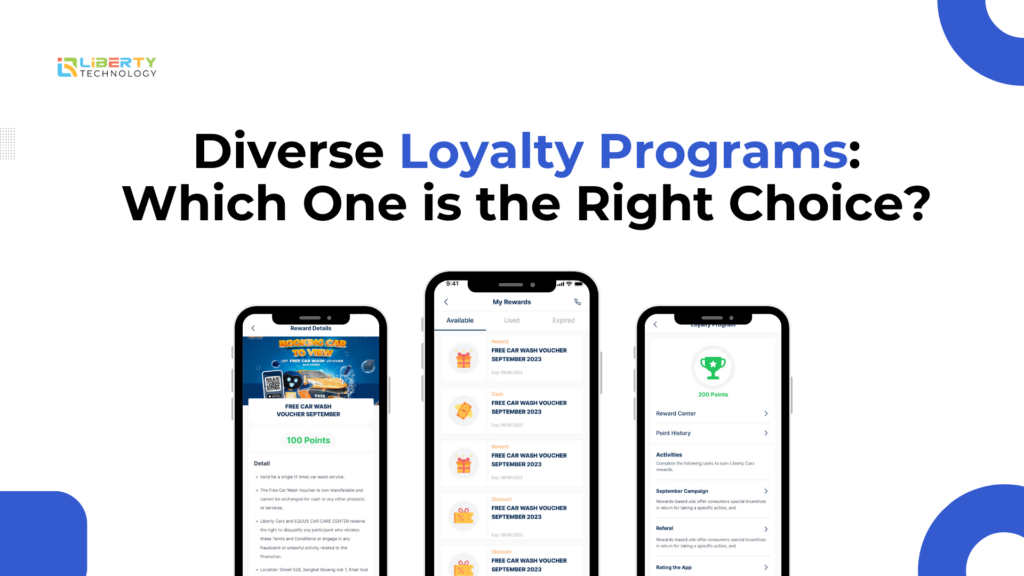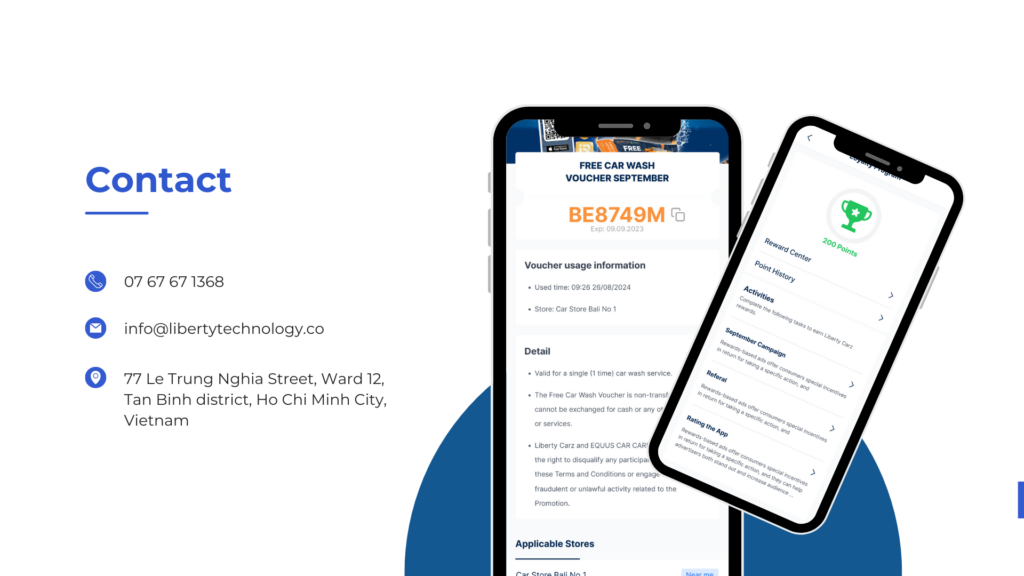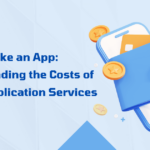
In an increasingly competitive market, building and maintaining sustainable customer relationships has become a crucial factor for business survival. A Loyalty App is not just a tool for recognizing and rewarding customers but also helps businesses understand consumer behavior, thereby creating precise and effective marketing strategies. Below is a compilation of popular loyalty program models and suggestions to help businesses choose the most suitable solution.
1. Point-Based Loyalty Program
This is the most traditional and straightforward loyalty model. Customers earn points with each transaction, which they can later redeem for discounts, gifts, or free services.
A prime example in Vietnam is VinID Rewards, where customers accumulate points when shopping at VinMart, VinFast, or using Vingroup services. These points can be redeemed for direct discounts or other benefits within the VinID ecosystem. Similarly, The Coffee House follows this model, allowing customers to collect points with every coffee purchase and later exchange them for free drinks or exclusive deals.
Studies indicate that the simplicity and transparency of this system make it easy for customers to track their accumulated value, thereby motivating repeat purchases. This not only enhances customer retention but also provides valuable data for businesses to optimize their marketing strategies.
2. Tiered-Based Loyalty Program
This model categorizes customers into different tiers based on their spending levels or transaction frequency. As customers “level up,” they gain access to exclusive benefits, fostering a sense of recognition and encouraging higher spending.
For example, Vietnam Airlines’ LotuSmiles program classifies customers based on their annual spending, offering perks such as extra baggage allowance and VIP lounge access. Similarly, Shopee’s tiered membership program differentiates customer groups through various tier-based incentives. This model not only enhances the personalized experience but also strengthens the brand’s exclusivity.
3. Paid Loyalty Program
In this model, customers pay a membership fee to access exclusive services and benefits. This creates a recurring revenue stream and fosters a loyal customer community with premium advantages such as fast delivery, exclusive content, or priority services.
For example, TikiNOW, Tiki’s paid loyalty program, offers free shipping, express delivery, and exclusive promotions for a subscription fee, leading to increased spending and frequent service usage. Research has shown that customers who join paid loyalty programs tend to have significantly higher lifetime value than non-members.
4. Value-Based Loyalty Program
This model focuses on providing not just financial benefits but also emotional and social value. Businesses may allocate a portion of their revenue to social causes, charities, environmental protection, or community development.
For instance, MoMo’s “Great Little Things” program allows customers to contribute to charitable funds. Similarly, Boo’s “Lights Off, Ideas On” campaign promotes eco-friendly living through sustainable fashion products. Vinamilk’s “Rising Vietnam Milk Fund” provides free milk to underprivileged children nationwide. These programs not only strengthen customer-brand connections but also build a socially responsible corporate image aligned with Vietnam’s sustainable consumption trends.
5. Coalition Loyalty Program
This model enables multiple businesses to collaborate on a shared loyalty program, benefiting both customers and participating companies by allowing point accumulation and redemption across various brands.
For example, digital wallets like MoMo and ZaloPay have demonstrated the effectiveness of coalition programs. When a customer uses MoMo to pay at a coffee shop, they can earn points for discounts on movie tickets, online shopping, or ride-hailing services. This encourages repeated usage across multiple acceptance points.
Instead of incurring high costs to acquire new customers, businesses can leverage the existing ecosystem of e-wallets to promote their products and drive more transactions. Multi-brand collaborations not only reduce expenses but also create a rich and flexible reward system.
6. Gamification
This model integrates gaming elements such as challenges, leaderboards, badges, and surprise rewards to increase customer engagement and interaction. Gamification enhances entertainment value while encouraging desired shopping behaviors to achieve specific milestones or levels.
E-commerce platforms like Shopee have successfully implemented gamification within their point-based programs, significantly increasing user interaction and loyalty. Research suggests that gamification elements can boost customer participation and improve app usage experience.
Choosing the Right Loyalty Program
Each loyalty program model has its strengths and weaknesses, making it suitable for different strategic goals and industry characteristics. An optimal loyalty app is one that integrates multiple loyalty programs tailored to the specific needs of each business. From simple point-based systems to advanced brand unification strategies, selecting the right model not only boosts revenue but also fosters sustainable customer relationships.
Leveraging digital technology and data analytics enables businesses to personalize experiences, optimize marketing strategies, and create a competitive advantage in today’s dynamic market. Investing in an effective loyalty program requires a deep understanding of target customers, data-driven analysis, and the right strategic direction.
Whether you choose a point-based, tiered, paid, value-driven, coalition, gamified, or brand-unified model—or even opt not to implement one—the key is to create a unique and sustainable customer experience that builds long-term loyalty and success.
With Liberty Technology’s professional Loyalty Program development team, your business will receive expert consultation on selecting the most suitable loyalty solution for your customer management system.











